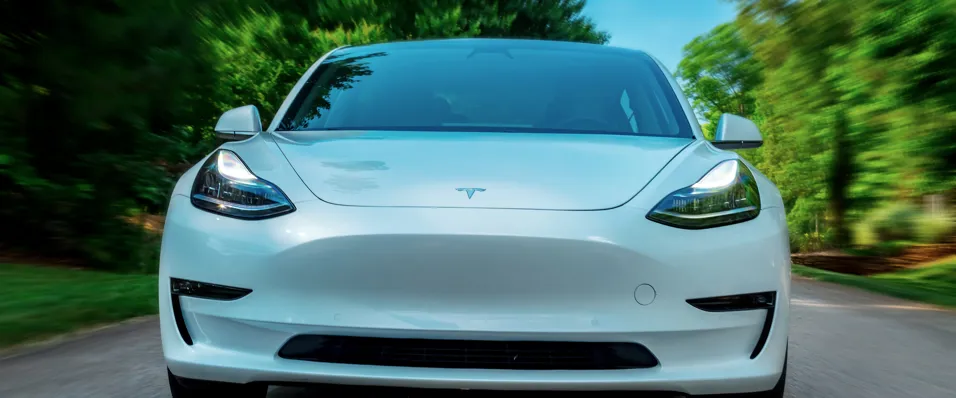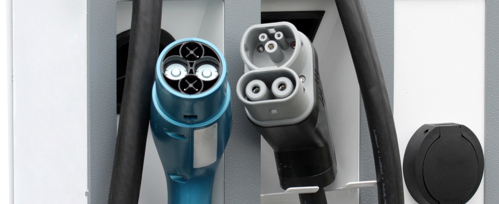
Latest developments in International Standards for supplies for electric vehicles.
History
Work on the 1st edition of IEC 60364-7-722 was initiated back in 2009 (10 years ago) and the first edition was published in February 2015. This was developed to answer the needs of the EV market in term of safety of supply of EVs installations , reliability and proper functioning of the supply. It was developed with the aim to provide specific requirements for electric vehicle supplies and to help low voltage installation design.
Work on a second edition started in 2015 and the second edition was published in September 2018. This second edition includes a number of significant changes to keep pace with the progress of electric vehicle charging.

Main changes in the latest edition of IEC 60364-7-722
Protection against electric shock
Clarification of the requirements regarding the protective measure placing out of reach has been included in order to allow the use of pantographs in areas accessible to the public.
Wireless power transfer
In addition, IEC 60364-7-722 Edition 2 recognises wireless power transfer (WPT) systems for EVs and requires compliance with the appropriate parts of the IEC 61980 series. Part 1 (general requirements) gives a list of possible WPT technologies. These are new and emerging technologies. Possible technologies include:
- Inductive power transfer - Energy transfer through magnetic field (MF-WPT)
- Capacitive power transfer - Energy transfer through electric field (EF-WPT)
- Microwave power transfer - Energy transfer through electromagnetic waves 1 GHz – 300 GHz (MW-WPT)
- Infrared power transfer - Energy transfer through electromagnetic waves 300 GHz – 400 THz (IR-WPT)
It is expected that future Parts of IEC 61980 series will cover specific requirements. For example Part 2 will cover communication between electric road vehicle (EV) and wireless power transfer (WPT) systems including general background and definitions.
A future Part 3 will cover specific requirements for electric road vehicle (EV) magnetic field wireless power transfer (MF-WPT) systems including general background and definitions (e.g. efficiency, electrical safety, EMC, EMF).
As you would expect the technical requirements for the various wireless power transfer (WPT) technologies are very different, and therefore the particular requirements for each technology will be dealt with in a specific part of the 61980 series.
EV operating as a source in parallel with other sources
In IEC 60364-7-722 Edition 1 it was stated that feeding back electricity into the supply network was under consideration. The new standard (IEC 60364-7-722 Edition 2 ) introduces requirements covering the case where the EV may operate as a source in parallel with other sources and states that where electric vehicles are intended to feedback energy to the electrical installations, the requirements of IEC 60364-8-2 apply. However, it’s important to note that IEC 60364-8-2 is under preparation and that the requirements for these circuits are under consideration.
Overvoltage control
IEC 60364-7-722 Edition 2 now makes it clear that a connecting point accessible to the public is considered as part of a public service. Therefore this means it must be protected against transient overvoltage’s, as clause 443.4 of IEC 60364-4-44 states that protection against transient overvoltage shall be provided where the consequence caused by overvoltage affects public services.
Charging modes
IEC 60364-7-722 Edition 2 makes reference to IEC 61851 (Electric vehicle conductive charging system). IEC 61851 describes the charging modes.
Mode 1 charging
Connection of the EV to the AC supply network utilizing standardized socket-outlets not exceeding 16 A and not exceeding 250 V AC single-phase or 480 V AC three-phase, at the supply side, and utilizing the power and protective earth conductors.
According to a note in IEC 61851 Mode 1 charging is not permitted in the UK.
Mode 2 charging
Connection of the EV to the AC supply network utilizing standardized socket-outlets not exceeding 32 A and not exceeding 250 V AC single-phase or 480 V AC three-phase, at the supply side, and utilizing the power and protective earth conductors together with a control pilot function and system of personnel protection against electric shock (RCD) between the EV and the plug or as part of the in-cable control box.
IEC 61851 points out that socket-outlets and plugs designed for household and similar use might not be designed for extended current draw or continuous use at maximum rated currents and might be subject to national regulations and standards for supply of energy to an EV.
Generally Mode 2 is the minimal charging solution for single phase domestic socket-outlets. It usually provides charging currents of 10A or less in the UK, but this should be checked as part of the design.
Mode 3 charging
Connection of the EV to the AC supply network utilizing dedicated electric vehicle supply equipment where the control pilot function extends to control equipment in the electric vehicle supply equipment, permanently connected to the AC supply network.
IEC 62196-2 gives details of vehicle inlet and vehicle connector Type 1 and Type 2 and Type 3 for Mode 3 charging. A mechanical or electromechanical means must be provided to prevent intentional and unintentional disconnection under load of the vehicle connector and/or plug according to IEC 62196-1.
Mode 3 recognises various levels of charging currents. A typical Type 2 Mode 3 charging point could be 32 Amp (7.2 kw).
Mode 4 charging
Connection of the EV to the AC supply network utilizing an off-board charger where the control pilot function extends to equipment permanently connected to the AC supply.
A mechanical or electromechanical means must be provided to prevent intentional and unintentional disconnection under load of the vehicle connector and/or plug according to IEC 62196-1.
One of the advantages with mode 4 charging is that it can provide fast high power charging. When charging a vehicle from an AC output charge point the charging power is often limited by the on-board battery charger of the electric vehicle. With (Mode 4) DC charging, DC power is provided directly to the battery system and is not limited by the on-board battery charger of the electric vehicle.
Therefore, mode 4 charging appears to be suited for use at motorway services, shopping centres, and busy urban areas where a fast charge is required to minimize charging time.
Conclusion
This is only a brief overview and highlights some of the key changes in the new IEC standard. For more information refer to IEC 60364-7-722 Edition 2.
Important: please note these are requirements at international level (world standards) which may or may not be incorporated in BS 7671 in the future.

